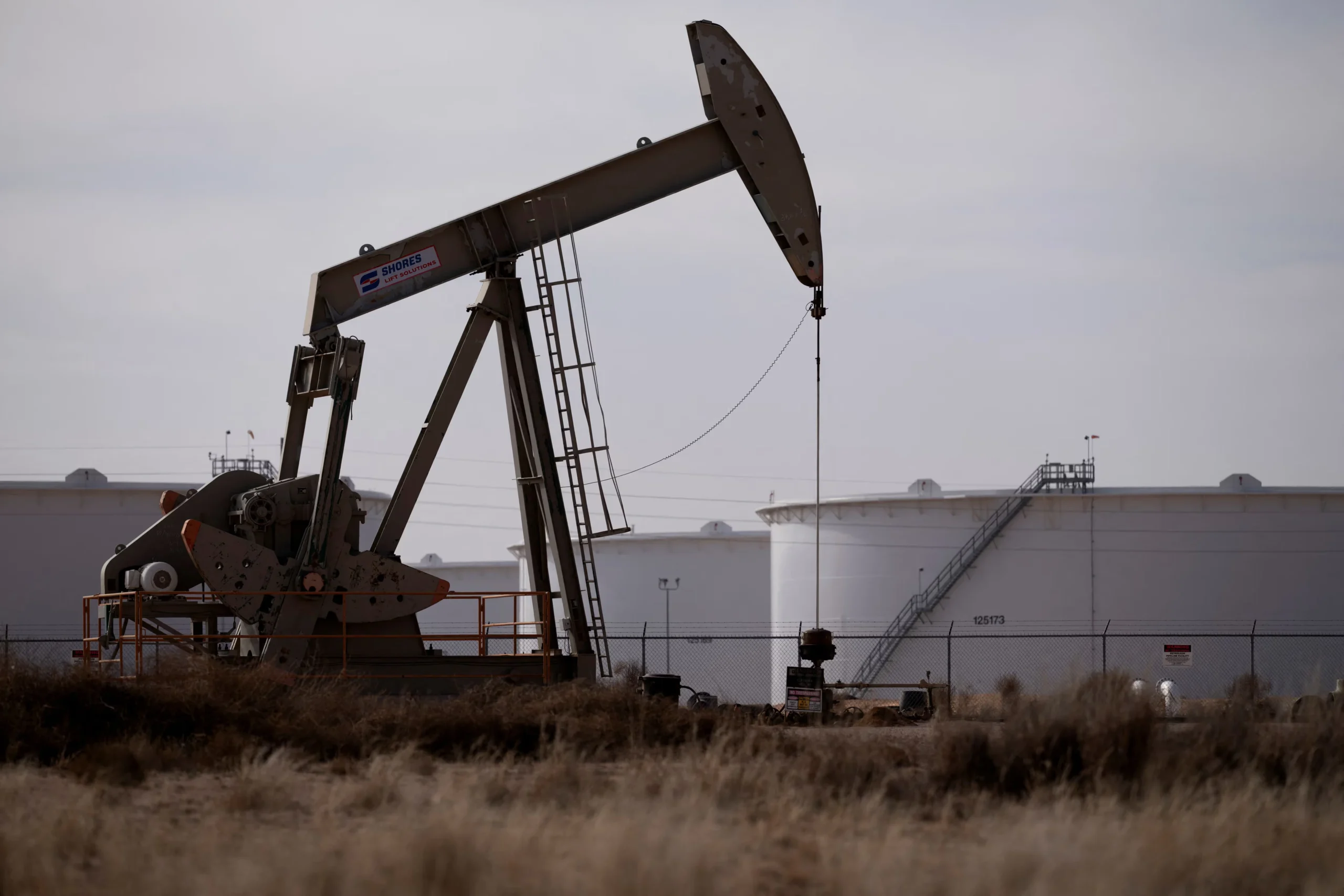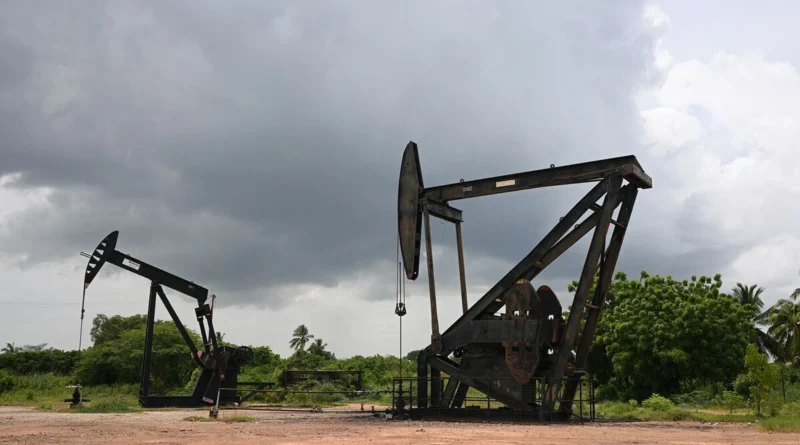Oil Prices in Freefall: How Trade Wars and Saudi Strategy Are Reshaping Global Markets—And Why India is Smiling
The global oil market is no stranger to volatility, but the current plunge in prices—triggered by a toxic cocktail of U.S.-China trade tensions and Saudi Arabia’s aggressive market tactics—has sent shockwaves through economies worldwide. As fears of a recession-driven demand slump collide with Riyadh’s surprise decision to flood the market, crude prices have spiraled to multi-year lows. Yet, amid the chaos, one major economy is quietly capitalizing on the turmoil: India. The world’s third-largest oil importer is leveraging the price crash to slash its energy bills, stabilize inflation, and bolster strategic reserves. This blog unpacks the forces behind the oil market’s dramatic swings, Saudi Arabia’s high-stakes gambit, and why India stands out as an unlikely beneficiary in this geopolitical drama.

The Trade War Tsunami: How Tariffs Are Crushing Oil Demand
The U.S.-China trade war, now in its third year, has developed from a bilateral spat into an outright worldwide economic headwind. As each country has placed tit-for-tat tariffs on $450 billion of goods, industrial production has slowed, supply chains have broken, and business sentiment has been drained. The International Monetary Fund (IMF) estimates the dispute will shave 0.8% from world GDP growth in 2023, a prediction that has shaken commodity markets.
Oil, traditionally a gauge of economic well-being, has felt the weight of this gloom. When factories are shut down and consumer expenditures fall, crude demand falters. China, the world’s biggest oil importer, had its GDP growth slow to a 27-year low of 6% in Q3 2023, as U.S. manufacturing fell for the sixth month in a row. With both countries representing 34% of global oil demand, the ripple effect is undeniable: Brent crude dropped from $75 a barrel in April 2023 to $55 by October, a 27% plummet.
“The trade war is functioning like a brake on oil demand growth,” declared Fatih Birol, the International Energy Agency’s (IEA) Executive Director. “Each tariff increase brings us closer to a situation where the market suffocates from surplus.”
Saudi Arabia’s Shock-and-Awe Tactic: Flooding the Market to Defend Dominance
Just as the trade war shook markets, Saudi Arabia—the de facto OPEC leader—shocked the world. In late September 2023, Riyadh declared it would increase oil production by 1.5 million barrels per day (bpd), well above its OPEC+ quota. The surprise blindsided analysts, who had anticipated supply cuts to shore up prices. To add insult to injury, Saudi Aramco cut its Official Selling Price (OSP) for Asian customers by $2.50 per barrel for May shipments, the deepest discount in a decade.
The kingdom’s strategy appears twofold:
- Preempt U.S. Shale and Russian Competition: U.S. shale producers, buoyed by breakeven prices as low as $48 per barrel, have steadily eroded OPEC’s market share. Russia, meanwhile, has ramped up exports to China, undercutting Saudi dominance. By flooding the market, Riyadh aims to drive prices low enough to cripple high-cost rivals.
- Secure Asian Demand: The OSP cut for Asia—home to 80% of Saudi exports—signals a bid to lock in long-term contracts with refining giants like India and South Korea. “Saudi Arabia is playing chess while others play checkers,” noted energy analyst Amrita Sen. “They’re sacrificing short-term revenue for long-term market control.”
The gambit, however, risks backfiring. With global storage tanks nearing capacity, prices could collapse further, squeezing OPEC members like Iraq and Nigeria, which require $60+ oil to balance budgets.
India’s Windfall: Fueling Growth on Cheap Crude
While producers panic, India is seizing the moment. The country imports 85% of its oil, and every $10 drop in crude prices saves it nearly $15 billion annually. With Brent hovering near $55, New Delhi is accelerating efforts to:
- Refill Strategic Reserves: India plans to top up its 39-million-barrel underground storage facilities, enough to cover 9.5 days of demand.
- Cut Fuel Subsidies: Lower crude prices enable the government to reduce costly subsidies on diesel and petrol, freeing up funds for infrastructure and social programs.
- Negotiate Better Deals: Indian refiners like Reliance Industries are leveraging the glut to secure rare discounts from Saudi Aramco and Iraq’s SOMO.
“For India, this is a golden window,” said Dharmakirti Joshi, Chief Economist at CRISIL. “Cheap oil eases inflationary pressures, strengthens the rupee, and narrows the current account deficit—all critical for sustaining 7% GDP growth.”
Global Fallout: Winners, Losers, and Geopolitical Shifts
The oil price crash is reshaping alliances and economies:
- U.S. Shale Under Pressure: Scores of indebted shale firms face bankruptcy if prices stay below $50. The Permian Basin, once a symbol of American energy revival, has seen drilling rig counts drop by 15% since June.
- China’s Strategic Stockpiling: Beijing is quietly buying discounted oil to build reserves, with imports hitting a record 11.8 million bpd in October.
- Venezuela and Iran: U.S. sanctions already crippled these nations; sub-$60 oil could decimate their remaining revenue streams.
Meanwhile, Saudi Arabia’s alignment with Russia in the OPEC+ alliance grows increasingly strained. Moscow, prioritizing market share over price, has resisted calls for deeper cuts.
The Road Ahead: Will the Glut Last?
Three scenarios could dictate the market’s trajectory:
- Trade War Truce: A U.S.-China deal could revive demand, lifting prices to $65-$70.
- OPEC Unity: If OPEC+ agrees to cut production by 1 million bpd, prices may stabilize near $60.
- Prolonged Glut: Should the trade war rage on and Saudi-Russia tensions flare, $40 oil becomes plausible—a nightmare for producers but a boon for importers.
India’s Moment in the Sun
While the U.S.-China trade war and Saudi Arabia’s market manipulations push oil prices into a tailspin, India is a rare beneficiary. By turning a crisis into an opportunity, New Delhi is insulating its economy from global headwinds and guaranteeing energy affordability to its 1.3 billion citizens. But the joyride might be brief. Sustained low prices have the potential to destabilize producer countries, triggering geopolitical turbulence that echoes far beyond oil markets. For the time being, however, India is happy to ride the tide—and stock its tanks while the prices are low.
Click Here to subscribe to our newsletters and get the latest updates directly to your inbox.

